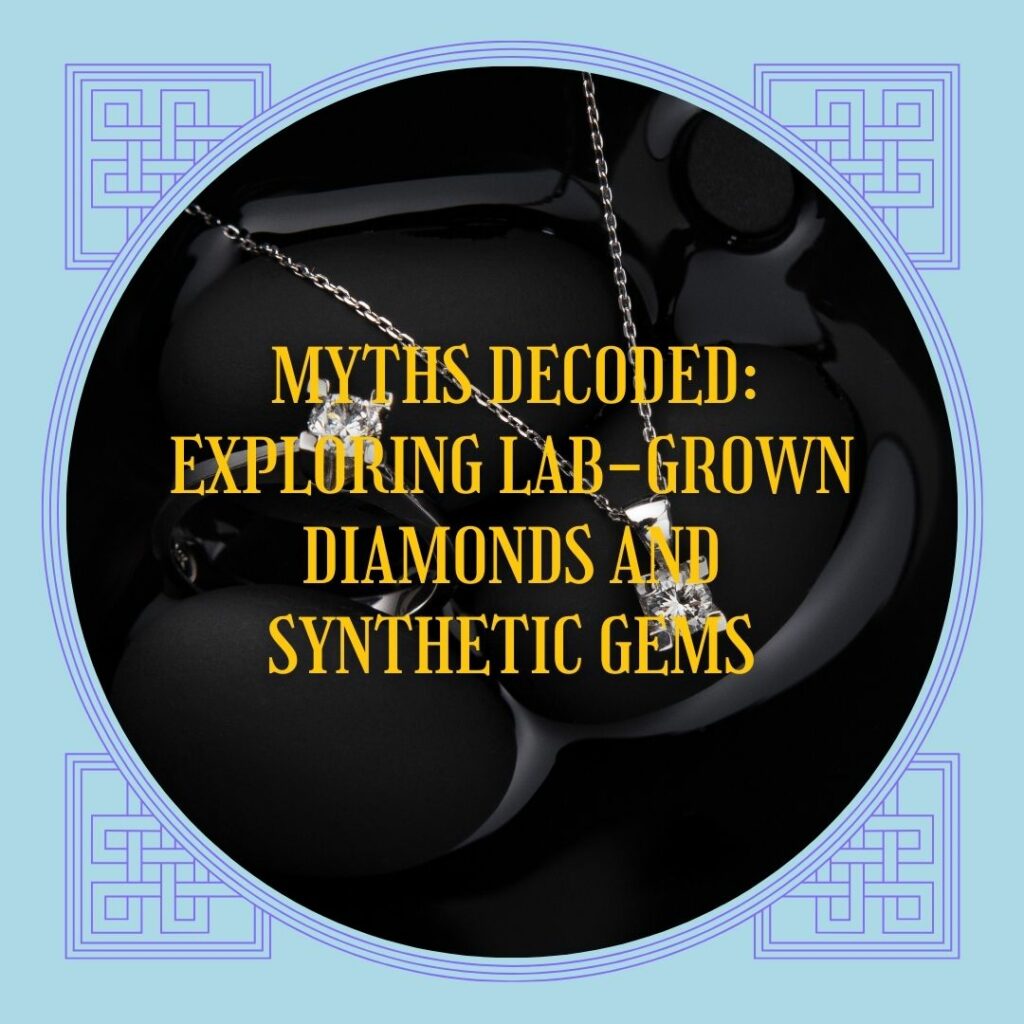In the realm of diamonds and gemstones, there exists a plethora of terms and concepts that can often be confusing to the uninitiated. One such area of confusion revolves around lab-grown diamonds and synthetic gems. These terms are sometimes used interchangeably, leading to misconceptions about their nature and properties. Let’s unravel these myths and delve into the world of lab-grown diamonds and synthetic gems to understand what they really entail.
Lab Diamonds: Natural Brilliance, Ethical Origins
Firstly, let’s address the term “lab diamond.” Contrary to what some may believe, a lab diamond is not a synthetic imitation of a natural diamond; rather, it is a genuine diamond produced in a laboratory setting. These diamonds possess the same chemical composition, crystal structure, and physical properties as natural diamonds. The key difference lies in their origin: while natural diamonds are formed deep within the Earth’s mantle over millions of years, lab-grown diamonds are created through advanced technological processes that replicate the conditions under which natural diamonds are formed.
Synthetic Diamonds: A Misleading Term
The term “synthetic diamond” is often used to describe lab-grown diamonds, but this can be misleading. While the word “synthetic” implies something artificial or fake, lab-grown diamonds are anything but. They are real diamonds, indistinguishable from their natural counterparts to the naked eye and even under a microscope. Calling them “synthetic” may inadvertently cast doubt on their authenticity, which is why it’s essential to clarify that lab-grown diamonds are genuine diamonds, just like those mined from the earth.
Lab-Created Diamond Rings: Ethical and Sustainable Choices
One of the most significant advantages of lab-grown diamonds is their ethical and sustainable nature. Unlike natural diamonds, which are often associated with environmental concerns and ethical issues such as mining practices and labor exploitation, lab-grown diamonds are produced in controlled laboratory environments with minimal impact on the planet. They offer a transparent and traceable supply chain, giving consumers peace of mind about the origins of their gemstones.
Dispelling Myths: Can You Tell the Difference?
One common misconception is that lab-grown diamonds are somehow inferior to natural diamonds. In reality, lab-grown diamonds exhibit the same brilliance, hardness, and beauty as natural diamonds. They are graded using the same standards by renowned gemological laboratories such as the Gemological Institute of America (GIA) and come with certifications that attest to their quality and authenticity.
Diamocycle: Your Source for Authentic Lab-Grown Diamonds
Among the many companies offering lab-grown diamonds, Diamocycle stands out as a trusted provider of high-quality, ethically sourced gemstones. With a commitment to transparency, Diamocycle offers a wide selection of lab-grown diamond rings and jewelry, ensuring that customers can find the perfect piece without compromising on quality or conscience. Moreover, Diamocycle provides wholesale direct lab-grown diamonds at competitive prices, making sustainable luxury more accessible to everyone.
Conclusion
In conclusion, the terms “lab-grown diamonds” and “synthetic diamonds” are often misunderstood, leading to misconceptions about their authenticity and value. It’s essential to recognize that lab-grown diamonds are genuine gemstones with the same beauty and brilliance as natural diamonds, offering a sustainable and ethical alternative to traditional mined diamonds. With companies like Diamocycle leading the way, consumers can make informed choices and embrace the brilliance of lab-grown diamonds with confidence and clarity.

